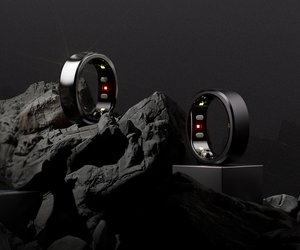
5 tips to maximise performance
Today’s is really a self-help guide to show you methods to help your body recover. So, let’s dive in and look at some of the simple recovery strategies you can integrate into your training program and make sure you stay through to the end because we’ve got a real surprise for you guys.
Now let’s start with something simple. I want you to think about when you’re exercising, your muscles work under a cycle of contracting and relaxing to produce movement. But the body is not a perfect machine, and sometimes, after a lot of repeated efforts, the relaxation doesn’t happen fully, and you’re left with some parts of the muscle which is still contracted. Our aim for full recovery is to make sure these are completely relaxed back to their normal tone.
Tip 1
Stretch – It shouldn’t come as a surprise to anyone that one of the simplest ways that we can help our body recover is by stretching the muscles that have been involved in the exercise. Stretching is as simple as applying a tension over the muscles to help encourage the muscles to relax completely. Now let’s not overcomplicate stretching.
It’s such a simple thing to do. Find the stretch that feels like it’s targeting the muscle that you’re after and then apply that stretch in small bouts done frequently. Look for ways to introduce stretching into your day-to-day routine. It may be as simple as doing calf stretches whilst you’re talking on the telephone or you may like to attack this in a more structured way through a yoga or Pilates class.
Tip 2
Massage – Using a percussive massage gun can help with the breaking down of scar tissue and lengthening of the muscles. Best to schedule this session during your recovery week as you are probably going to be worse before you get better.

Explore the Theragun range of percussive massage guns
Tip 3
Compression – the concept of compression is to speed up blood flow, a very common modality for sports people is the compression sock. These typically are in the pressure range between 6 and 20 mmhg and have the limitation in that they are static pressure i.e. they hold the limb rather than squeeze and release in a pulsing or milking action and therefore have limited use.
Pneumatic intermittent compression, commonly know as compression boots operate at a much higher-pressure range when compared to compression socks. Typically, this range is 100 to 240 mmhg of pressure and works in a pulsing or milking action from the foot upwards. Intermittent compression has been used in the medical world for more than 30 years to treat swelling symptoms resulted from a number of underlying medical conditions.
Aside from faster removal of waste products and delivery of fresh nutrients for faster healing and recovery, it also can improve joint awareness, movement efficiency, and more importantly a reduction of soreness, getting you ready for action again, sooner. Most importantly, the recovery process can be done any time at the comfort of your home.

The pulsing or milking action has 2 phases, firstly the Squeeze Phase effectively mimics the body’s natural recovery, greatly enhancing the movement of fluid and waste out of the limbs after an intense workout of competition. The active compression helps move blood through your veins towards your heart. The continuous squeeze or compression phase from the lower limbs to upper limbs lasts around 1 minute effectively keeps the fluid moving in the right direction.
Secondly The release phase of around 20 seconds promotes the natural release of substances in your body that help prevent clots. Between compressions, the leg cuffs relax, and oxygen-rich blood continues to flow in the arteries of your legs. Essentially, it speeds up recovery by accelerating the transport of fresh nutrients back to the muscles to speed up healing, recovery and gains.
Explore the Recovery Systems compression boots here
Tip 4
Contrast Therapy – You can also look at fast-tracking your recovery by using contrast showers or ice baths. A contrast shower Involves going from a hot shower to a cold shower. This is going to force your blood vessels to vasodilate or open up and then rapidly vasoconstrict or close down. This produces a pump within the muscle to help flush out all the metabolic wastes and encourage new blood flow in there.
To get the most out of a contrast shower, sit under the hot for 90 seconds. This is because it takes longer for your body to vasodilate and then switch rapidly to a cold shower and stay there for 30 seconds. You can alternate between 90 seconds of hot, 30 seconds of cold, and you might run through four or five cycles of this. You’ll feel the benefits as soon as you step out of the shower. A quick tip: always finish on a hot cycle.
The next step up from this is a rotation between a spa pool, plunge pool at around 8c, spa pool, sauna then repeat. Acclimatizing to the cold water and spending at least 5 mins per cycle is a great way (along with the hot contrast) to accelerate toxin removal and recovery gains. A note on ice – I’ve never been a fan of ice for recovery as it delays inflammation which is the first phase of healing, recovery and gains. Ice can mitigate muscle gains. On the other hand, ice for trauma such is experienced in contact sports like rugby or fighting sports, is totally appropriate for internal bleeding control and pain relief.
Tip 5
Sleep – sleep is the body's #1 recovery modality and it makes sense to monitor and adapt to improve sleep quality. As mentioned in the previous paragraph, Pneumatic intermittent compression has a big fan base aside from recovery of for improving both naps and general sleep quality, here are some other of my findings and tips gathered over the years.
Keeping regular sleep and wake times rising around sunrise with 7 to 9 hours of total sleep is a great formula. Sleeping 10pm to 6am is better than 12 midnight to 8am, it’s the hours before midnight that are important! Awaking at Sunrise and getting some sunshine is also important to set your bodies circadian clock.



Leave a comment